Abstract
Auxin precursors retard abscission when applied to debladed petioles of Coleus blumei Benth. The d and l forms of tryptophan are equally effective in retarding abscission. Tryptamine is more effective than is tryptophan. Both compounds apparently are converted to auxin through an aldehyde intermediate. The evidence presented suggests that a major pathway of tryptophan metabolism proceeds through tryptamine, as can be demonstrated by the use of amine oxidase inhibitors in the petiole tissue. Cell free preparations of the tissues metabolize tryptophan-1-14C with the release of carbon dioxide. The rate of tryptophan mtabolism in abscission tissue is 5 times that in distal petiole tissue. Radioactivity is associated with basic indole conversion products as well as with neutral and acidic fractions. The radioactivity is most concentrated in the neutral fraction. The results indicate that the Coleus petiole itself is capable of producing auxin.
Full text
PDF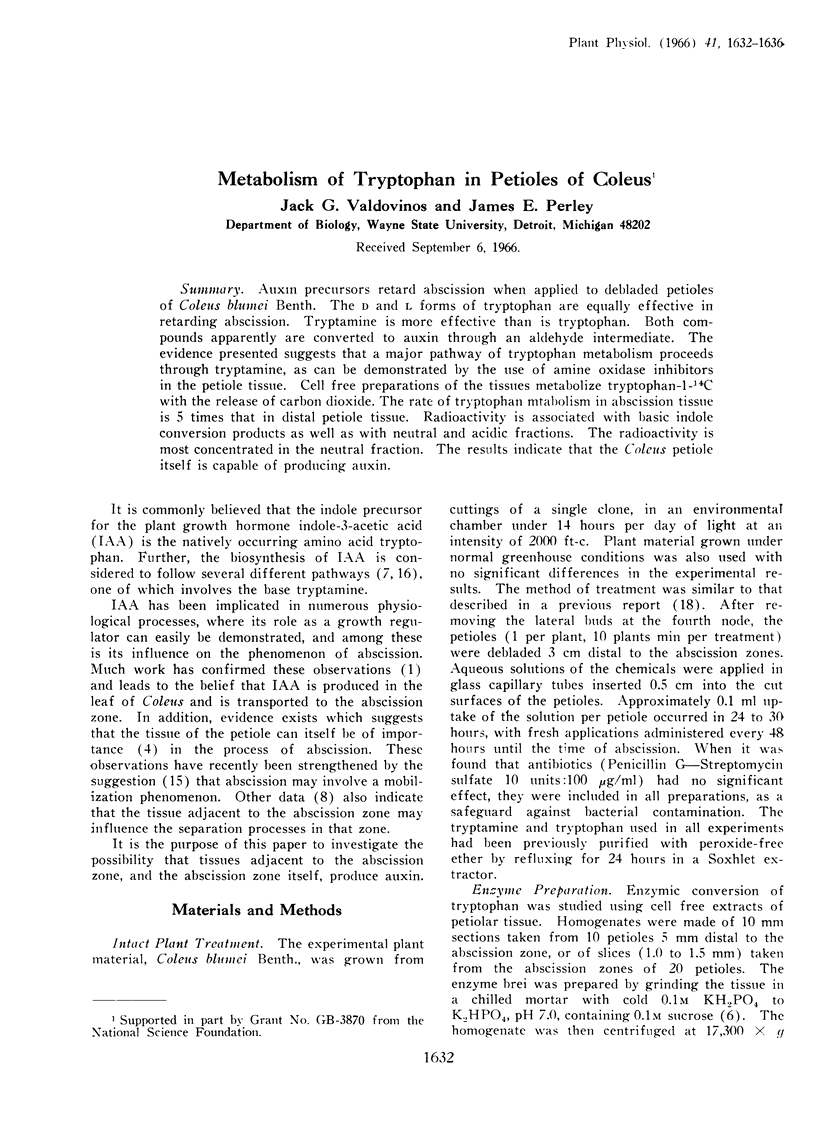
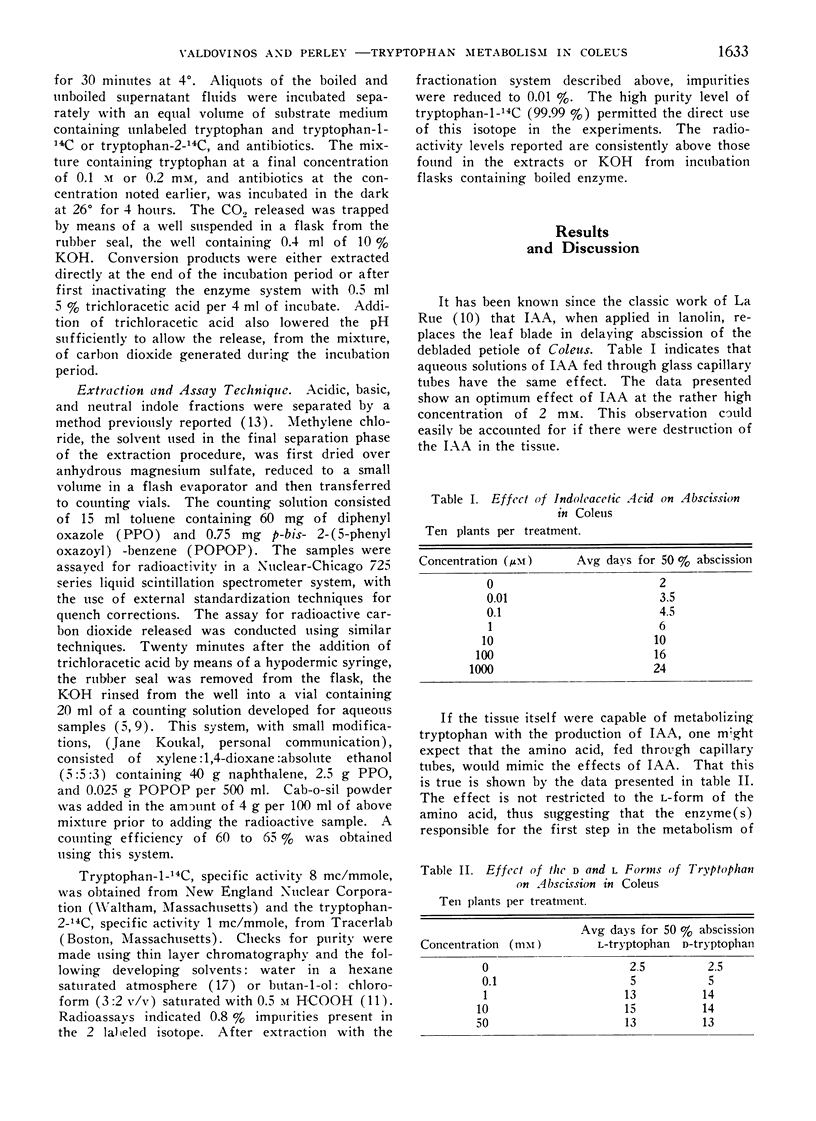
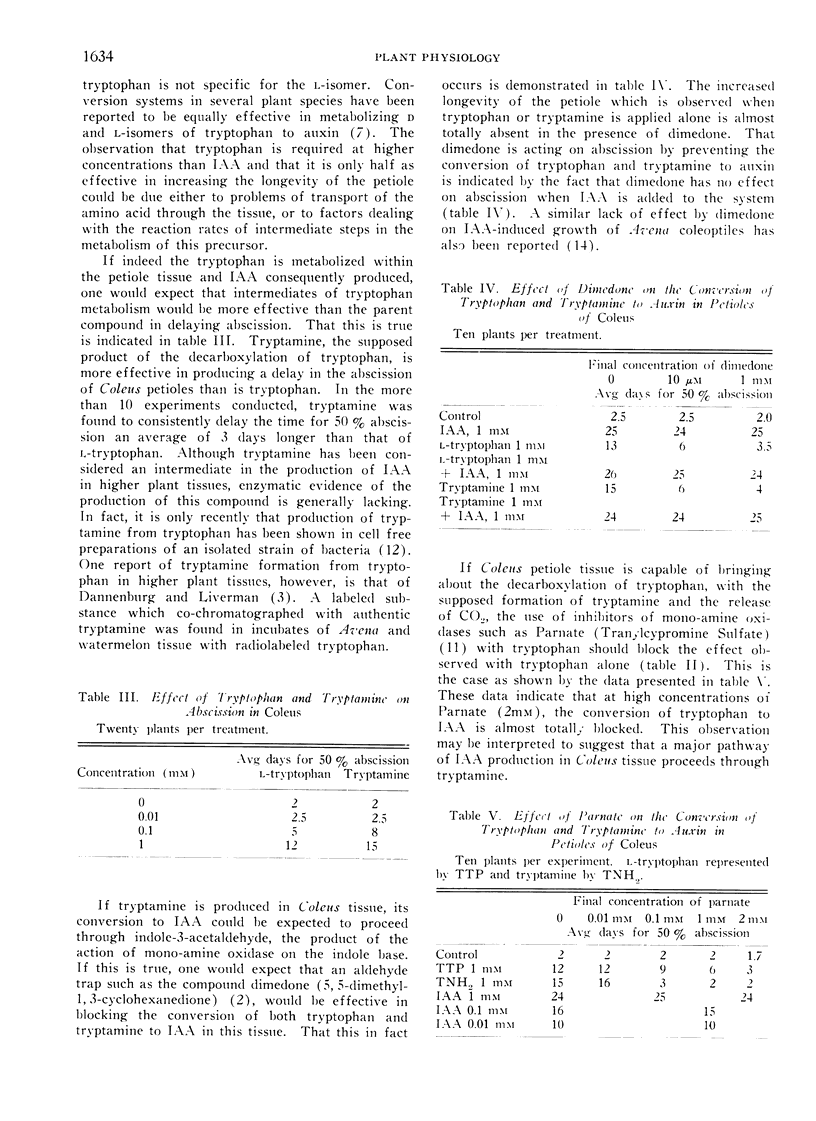
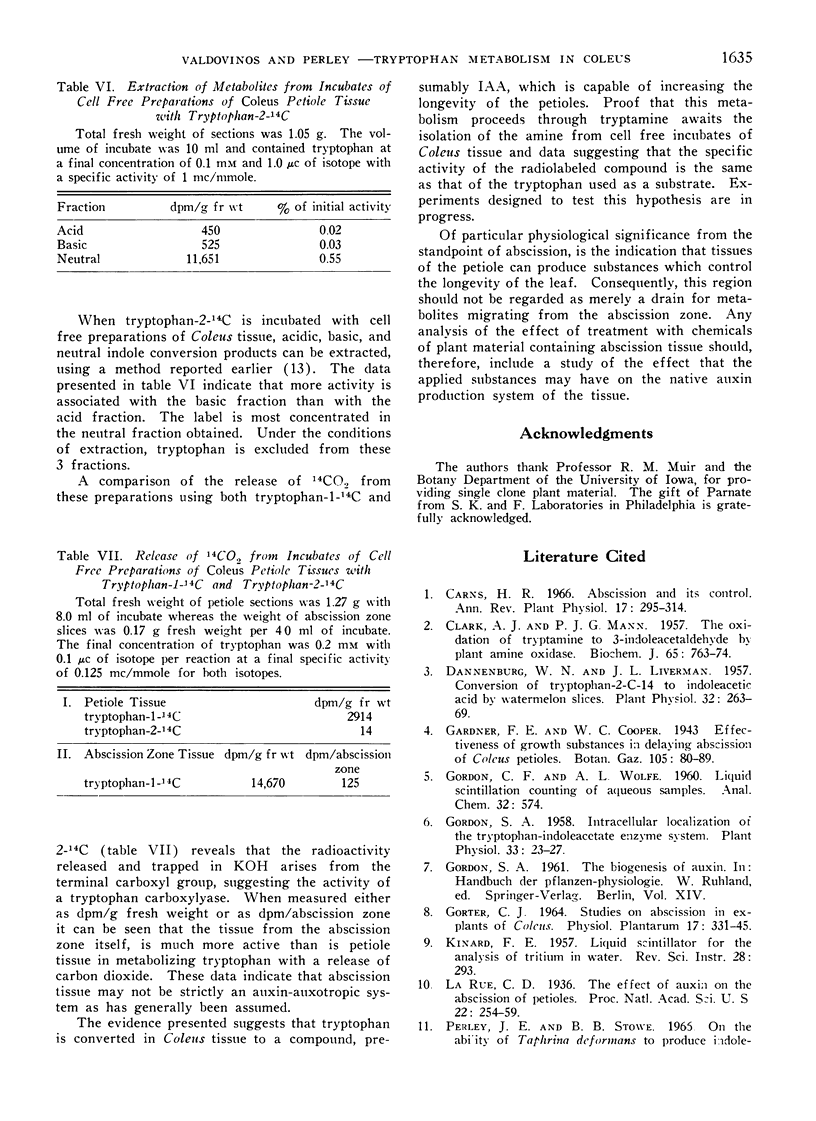
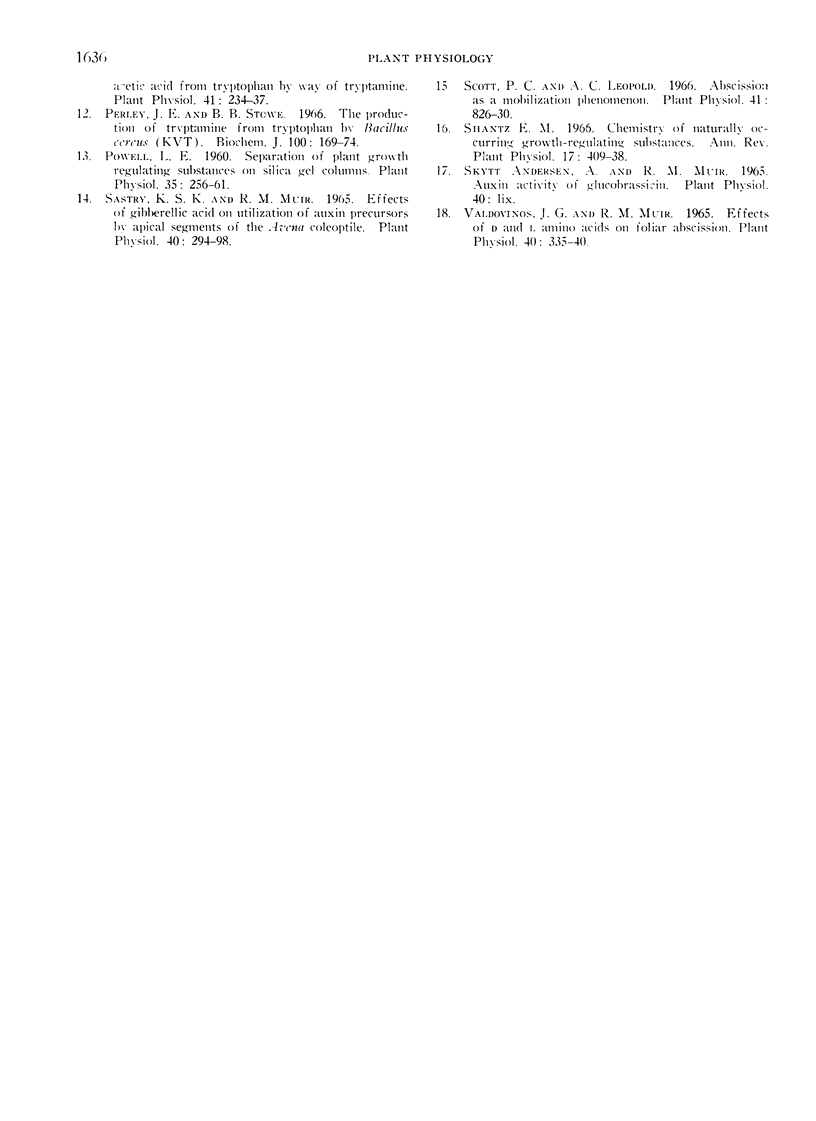
Selected References
These references are in PubMed. This may not be the complete list of references from this article.
- CLARKE A. J., MANN P. J. The oxidation of tryptamine to 3-indolylacetaldehyde by plant amine oxidase. Biochem J. 1957 Apr;65(4):763–774. doi: 10.1042/bj0650763. [DOI] [PMC free article] [PubMed] [Google Scholar]
- Dannenburg W. N., Liverman J. L. Conversion of Tryptophan-2-C to Indoleacetic Acid by Watermelon Tissue Slices. Plant Physiol. 1957 Jul;32(4):263–269. doi: 10.1104/pp.32.4.263. [DOI] [PMC free article] [PubMed] [Google Scholar]
- Gordon S. A. Intracellular Localization of the Tryptophan-indoleacetate Enzyme System. Plant Physiol. 1958 Jan;33(1):23–27. doi: 10.1104/pp.33.1.23. [DOI] [PMC free article] [PubMed] [Google Scholar]
- La Rue C. D. The Effect of Auxin on the Abscission of Petioles. Proc Natl Acad Sci U S A. 1936 May;22(5):254–259. doi: 10.1073/pnas.22.5.254. [DOI] [PMC free article] [PubMed] [Google Scholar]
- Powell L. E. Separation of Plant Growth Regulating Substances on Silica Gel Columns. Plant Physiol. 1960 Mar;35(2):256–261. doi: 10.1104/pp.35.2.256. [DOI] [PMC free article] [PubMed] [Google Scholar]
- Scott P. C., Leopold A. C. Abscission as a mobilization phenomenon. Plant Physiol. 1966 May;41(5):826–830. doi: 10.1104/pp.41.5.826. [DOI] [PMC free article] [PubMed] [Google Scholar]
- Valdovinos J. G., Muir R. M. Effects of d and l Amino Acids on Foliar Abscission. Plant Physiol. 1965 Mar;40(2):335–340. doi: 10.1104/pp.40.2.335. [DOI] [PMC free article] [PubMed] [Google Scholar]


